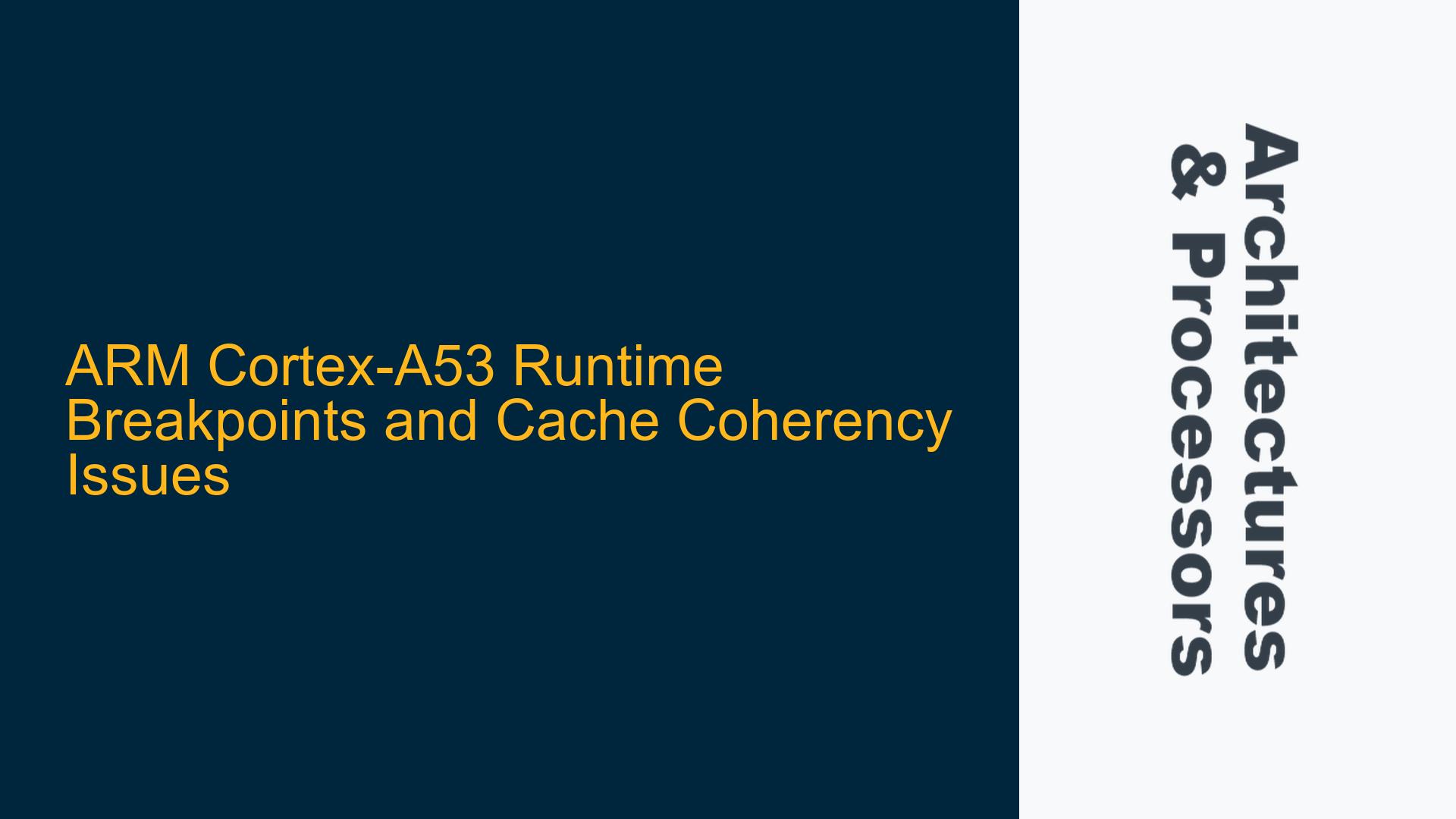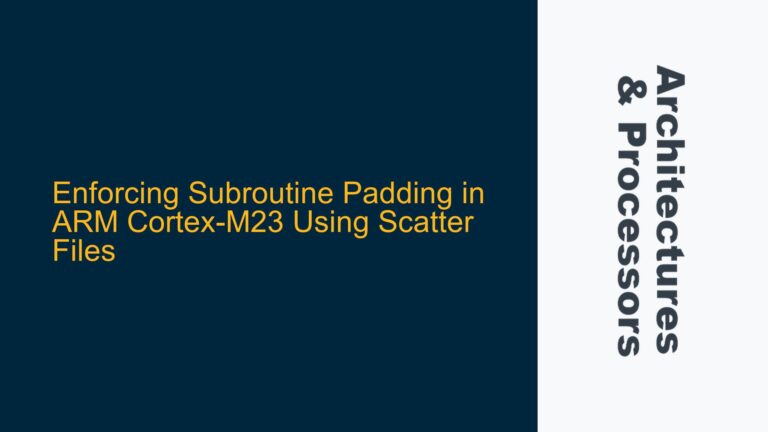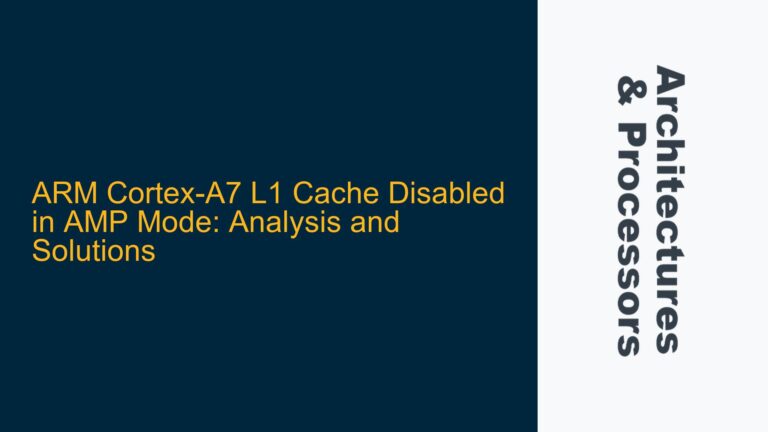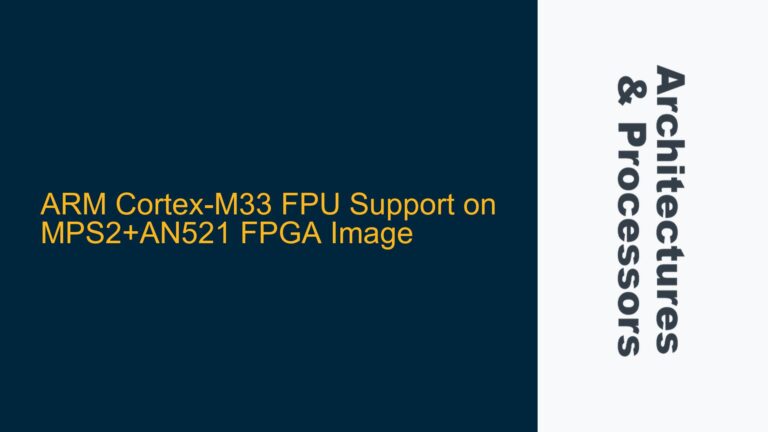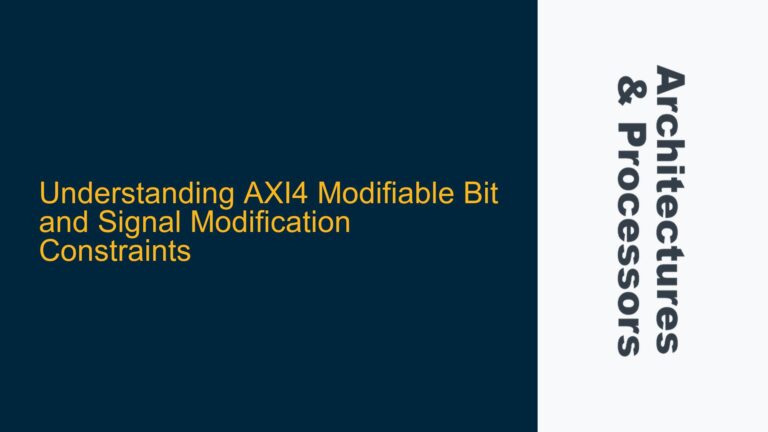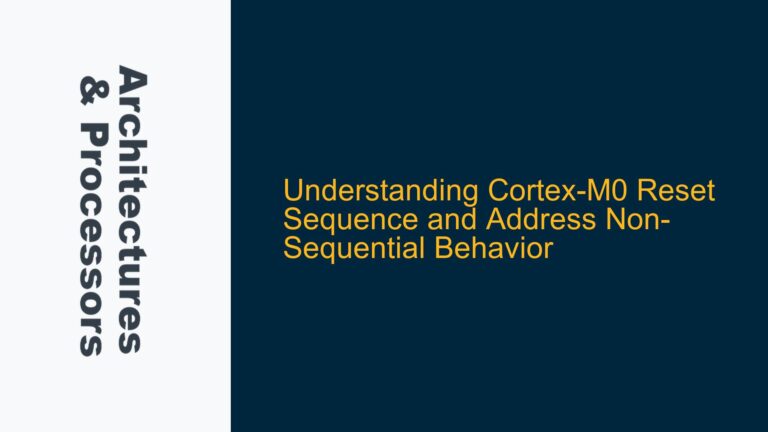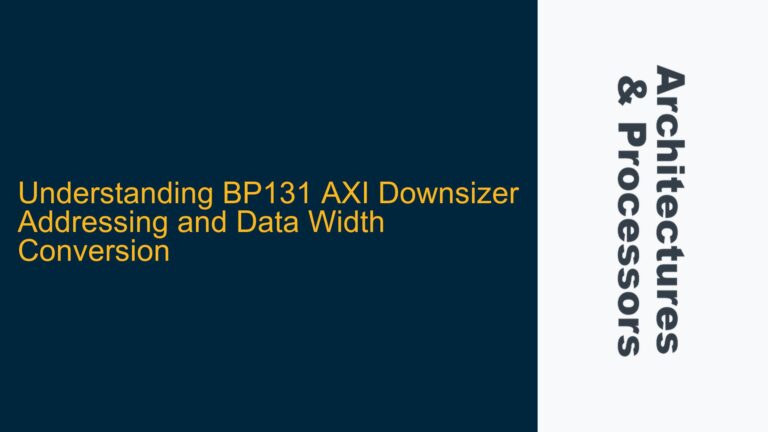ARM Cortex-A53 Instruction Cache Coherency During Runtime Breakpoint Insertion
When working with the ARM Cortex-A53 processor, one of the most challenging aspects of debugging is ensuring that runtime breakpoints are correctly inserted and recognized by the instruction cache. The Cortex-A53, being a high-performance ARMv8-A architecture processor, employs separate instruction (I) and data (D) caches to optimize performance. However, this separation introduces complexity when modifying code at runtime, such as inserting breakpoints, because the instruction cache may not immediately reflect changes made to the program memory.
The core issue arises when a debugger attempts to insert a breakpoint by replacing an instruction in memory with a breakpoint instruction (e.g., BRK). If the instruction cache is not properly synchronized with the data cache, the processor may continue executing the old instruction from the cache, ignoring the newly inserted breakpoint. This results in the debugger failing to halt execution at the intended location, making it appear as though the breakpoint was not set correctly.
The Cortex-A53’s cache architecture is designed to optimize performance by allowing the instruction and data caches to operate independently. While this design is beneficial for execution speed, it necessitates explicit cache management when modifying executable code. Without proper cache synchronization, the instruction cache may serve stale instructions, leading to unexpected behavior during debugging.
Cache Management and Memory Barrier Omissions in AArch32 Mode
The root cause of the breakpoint insertion issue lies in the omission of proper cache management and memory barrier instructions. In the ARM architecture, cache coherency between the instruction and data caches is not automatically maintained when program memory is modified. Instead, the developer must explicitly ensure that changes to memory are propagated to the instruction cache.
In AArch32 mode, the Cortex-A53 provides specific cache maintenance operations and memory barriers to address this issue. Key instructions include:
- DCCMVAU (Data Cache Clean by Virtual Address to PoU): Cleans the data cache up to the Point of Unification (PoU), ensuring that modifications to memory are visible to the instruction cache.
- ICIMVAU (Instruction Cache Invalidate by Virtual Address to PoU): Invalidates the instruction cache, forcing it to reload instructions from memory.
- BPIMVA (Branch Predictor Invalidate by Virtual Address): Invalidates the branch predictor to prevent it from using stale predictions.
- DSB (Data Synchronization Barrier): Ensures that all cache maintenance operations are completed before proceeding.
- ISB (Instruction Synchronization Barrier): Ensures that the processor fetches new instructions after the cache is invalidated.
The absence of these instructions, or their incorrect sequencing, can lead to the instruction cache serving outdated instructions, causing breakpoints to fail. For example, if a debugger modifies memory to insert a breakpoint but fails to invalidate the instruction cache, the processor may continue executing the original instruction from the cache.
Additionally, the use of memory barriers is critical to ensure that cache maintenance operations are completed in the correct order. The DSB instruction ensures that all preceding cache operations are completed before subsequent instructions are executed, while the ISB instruction ensures that the processor fetches new instructions after the cache is invalidated. Omitting these barriers can result in race conditions where the processor fetches instructions before the cache is fully synchronized.
Implementing Cache Synchronization and Breakpoint Handling in AArch32
To resolve the breakpoint insertion issue on the Cortex-A53 in AArch32 mode, a sequence of cache maintenance operations and memory barriers must be implemented. The following steps outline the correct procedure for ensuring cache coherency when inserting breakpoints:
-
Modify Program Memory: Replace the target instruction with the breakpoint instruction (e.g.,
BRK). This operation is performed in the data cache.STR R11, [R1] ; R11 contains the breakpoint instruction, R1 points to the target address -
Clean the Data Cache: Use the
DCCMVAUinstruction to clean the data cache up to the Point of Unification (PoU). This ensures that the modified memory is visible to the instruction cache.DCCMVAU R1 ; Clean the data cache for the address in R1 -
Insert a Data Synchronization Barrier: Use the
DSBinstruction to ensure that the data cache clean operation is completed before proceeding.DSB ; Ensure completion of the data cache clean operation -
Invalidate the Instruction Cache: Use the
ICIMVAUinstruction to invalidate the instruction cache for the modified address. This forces the instruction cache to reload the instruction from memory.ICIMVAU R1 ; Invalidate the instruction cache for the address in R1 -
Invalidate the Branch Predictor: Use the
BPIMVAinstruction to invalidate the branch predictor. This prevents the processor from using stale predictions based on the old instruction.BPIMVA R1 ; Invalidate the branch predictor for the address in R1 -
Insert Another Data Synchronization Barrier: Use the
DSBinstruction again to ensure that the instruction cache and branch predictor invalidations are completed.DSB ; Ensure completion of the instruction cache and branch predictor invalidations -
Insert an Instruction Synchronization Barrier: Use the
ISBinstruction to ensure that the processor fetches the new instruction after the cache is invalidated.ISB ; Synchronize the instruction stream -
Branch to the New Code: Execute a branch instruction to ensure that the processor begins executing the new code.
BX R1 ; Branch to the address in R1
The following table summarizes the sequence of operations and their purposes:
| Step | Instruction | Purpose |
|---|---|---|
| 1 | STR R11, [R1] |
Replace the target instruction with the breakpoint instruction. |
| 2 | DCCMVAU R1 |
Clean the data cache to make the modification visible to the instruction cache. |
| 3 | DSB |
Ensure completion of the data cache clean operation. |
| 4 | ICIMVAU R1 |
Invalidate the instruction cache to force a reload from memory. |
| 5 | BPIMVA R1 |
Invalidate the branch predictor to prevent stale predictions. |
| 6 | DSB |
Ensure completion of the instruction cache and branch predictor invalidations. |
| 7 | ISB |
Synchronize the instruction stream to fetch the new instruction. |
| 8 | BX R1 |
Branch to the new code to begin execution. |
By following this sequence, developers can ensure that breakpoints are correctly inserted and recognized by the Cortex-A53 processor. This approach addresses the cache coherency issues that arise when modifying executable code at runtime, enabling effective debugging on ARMv8-A architectures.
In conclusion, the Cortex-A53’s cache architecture requires explicit management when inserting breakpoints at runtime. Proper use of cache maintenance operations and memory barriers is essential to ensure that the instruction cache reflects changes made to program memory. By implementing the steps outlined above, developers can overcome the challenges of runtime breakpoint insertion and achieve reliable debugging on the Cortex-A53.
